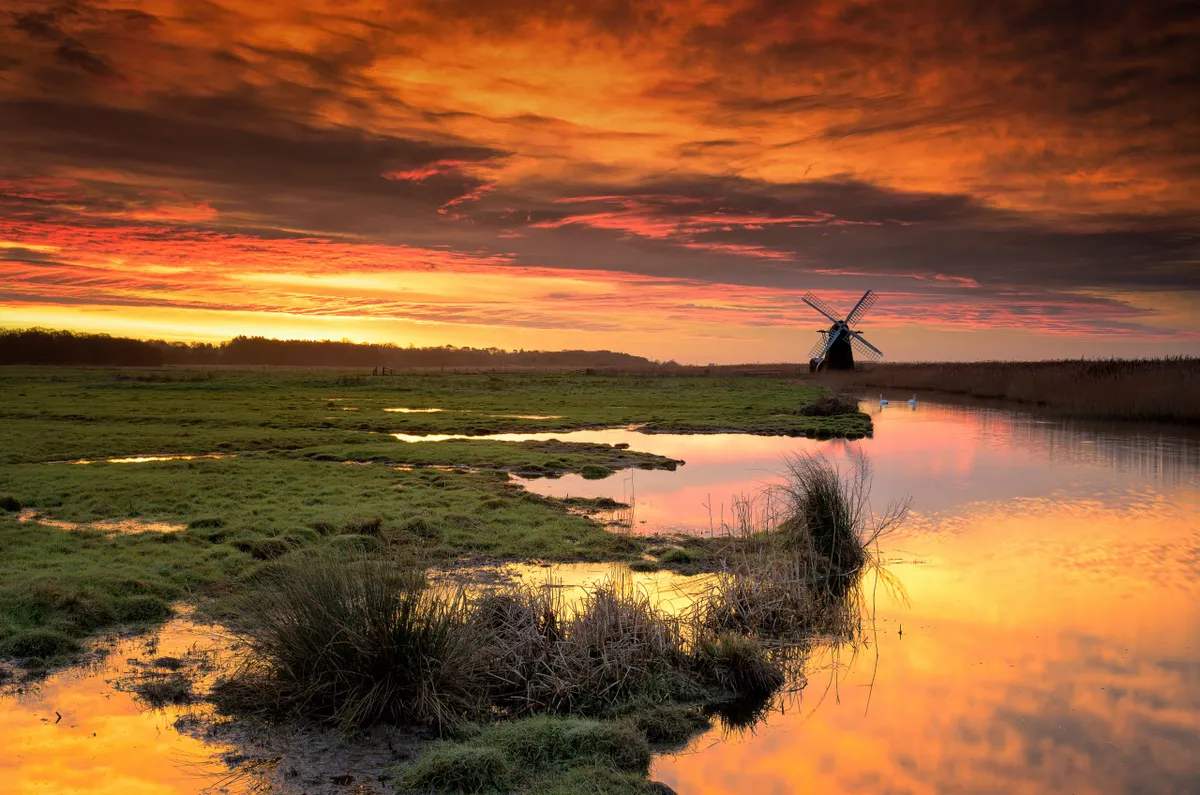The flaming coral of a winter’s sunrise; the mirror of a flooded marsh; the steamy breath of grazing cattle; the skeleton tracery of windmill sails. Iconic is an overused word, but no less accurate a description of the view towards Herringfleet Mill at dawn.
What is ironic is that this most quintessentially English scene was also used to suggest a Dutch landscape in the opening sequence of the 2014 Mike Leigh film
Mr Turner. It wasn’t just the flatness of Suffolk that appealed to the film-makers – the simple wooden form and elegant proportions of the mill itself are also reminiscent of Dutch drainage mills.

Life of a marshman
Strictly speaking, Herringfleet is not a windmill, but a windpump, since it was built to pump water, not grind corn. It’s the last surviving example of numerous smock mills that were constructed throughout the Fens and Broadland in the 17th century, although Herringfleet was built later, in about 1820. One of a number of mills that once stood sentinel along the banks of the River Waveney, it is distinctive in form: octagonal, three-storied, clad in tarred weatherboards and topped by a boat-shaped cap. Notably, the mill’s sails – known as ‘common sails’ – are covered in sailcloth when in action.
In a good wind, Herringfleet mill would once have pumped up to 9,000 litres of water a minute, all overseen by the resident marshman. You get a vivid picture of the hardships of his solitary life if you step inside the soot-blackened ground floor of the mill – a simple wooden couch and a (flue-less) fireplace are the only comforts.

Sails and swallows
The last marshman left Herringfleet in 1956, and from about 1950 the mill was assisted in its work by a mechanical pump. Today, the essential job of drainage is performed by an automatic electric pump at nearby Somerleyton. Although the mill was restored in the 1970s, it is currently missing two sails. However, plans for repairs are underway, and on 10 May the mill will again be open to the public – when the blue skies and first swallows of spring will make for an altogether different scene.

